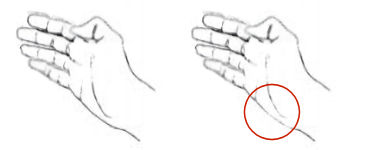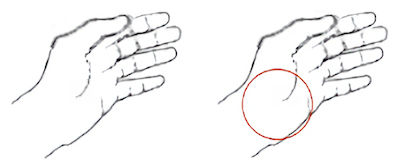Eighth Kyū – Blue Belt
What’s New for 8th Kyū?
Karate
Techniques
Improvement
What is the role of kata in martial arts practice?
In Japan the martial arts fall within the category of geido, or “artistic ways.” The Japanese believe the arts can only be learned by doing rather than reading or watching. The meaning of techniques come from the total mind and body understanding obtained through practice.[1]
The type of practice employed by schools teaching the arts, including martial arts, is called keiko. Keiko is learning which requires polishing through repetition of established forms, or kata. Kata are the basic methods by which techniques are transmitted from master to student.
The method of instruction was to repeat the kata under the guidance of the master. Learning involved a rote imitation of the teacher’s kata, with no resistance, no attempt to embellish, no questions asked and commonly with no explanation of the individual moves. Constant polishing of the moves, inner reflection on the process, down to the tiniest detail of stance or how one held one’s hands, it was believed, would untimately result in understanding.[2]
[1] Hurst, G. Cameron: Ryūha in the Martial & Other Japanese Arts, Journal of Asian Martial Arts, vol. 4, no.4, 1995, p.20.
[2] Hurst, G. Cameron: Ryūha in the Martial & Other Japanese Arts, Journal of Asian Martial Arts, vol. 4, o.4, 1995, p.13-25.
Fist Techniques
Open Hand Techniques
| Kobushi -ken | 拳 | fist |
| Seiken | 正拳 | regular fist |
| Shōken | 小拳 | “small fist” |
| Boshiken | 拇指拳 | “thumb fist” |
| Uraken | 裏拳 | reverse side of fist |
The Hand Techniques of Sanchin
There are several different ways to clench the hand that are called fists and can be used for punching. Which fist to use depends on the situation and on the target.
The Hand Techniques of Kanshiwa
Seiken
The most basic fist is seiken. Unless you are specifically told otherwise, it is the fist of choice. It is easy to make and the safest fist for beginners. The first two knuckles of the fist are the biggest and strongest. They are well-supported by the bones of the arm.

Shōken
The most basic fist is seiken. Unless you are specifically told otherwise, it is the fist of choice. It is easy to make and the safest fist for beginners. The first two knuckles of the fist are the biggest and strongest. They are well-supported by the bones of the arm.

Shutō

Uraken
The fist of uraken is make exactly the same as seiken. However, you strike with the back side of the fist. The uraken of Kanshiwa is not a punch up or out but rather a slam down. The motion is a bit like driving a nail with a hammer, but with the nose as the nail.

Boshiken

Shōte

The most basic fist is seiken. Unless you are specifically told otherwise, it is the fist of choice. It is easy to make and the safest fist for beginners. The first two knuckles of the fist are the biggest and strongest. They are well-supported by the bones of the arm.
Your success can serve to inspire and motivate other students, especially if achieved through hard work and accepted with humility. While we may admire and even envy the strongest, the most precise, the fastest and the best, it is the struggle to improve, the perseverance, the dedication and the hard work that truly inspires. This is how our improvement can benefit others.
Self-improvement
I will strive for individual achievement for the benefit of others.
Two Barriers to Success in the Martial Arts
Pride
If a student believes that he or she is always right then the student will fail to honestly evaluate their skills and understanding. With their mind closed to new possibilities, there is no drive to improve. Such students are often happy to evaluate and criticize others, but cannot accept suggestions themselves.
Empty your cup
in order that it may be filled.
Lee, Bruce, Tao of Jeet Kune Do, Ohara Publications, Incorporated (1975)
Self-doubt
Gains in karate class often come in increments too small to notice. They may come only after long plateaus of performance. Far from being the conquering hero of your imagination, you may struggle to make even the smallest improvement. Don’t allow expectations that are too high to cause you to doubt yourself. Avoid comparing yourself to others in the class. There will always be students who have been practicing longer or catch on quicker. Instead, compare yourself to what you were able to do last month or last year. Don’t allow a failure of confidence to keep you from doing your best. You are good enough, and you will get even better.
There is nothing noble in being superior to your fellow man; true nobility is being superior to your former self.
Ernest Hemingway
The Best Attitude for Learning
Humility is the opposite of pride and not at all the same as self-doubt. The humble student is modest about their abilities and achievements, and does not believe that they know more or are better than the other students. Humility is the best attitude for learning. The humble student, will receive constructive criticism as though he or she has received a great gift. The student realizes the instructor has taken special interest in their advancement.
Saying Thank You
| Japanese | English |
| Arigatō. | Thanks. (informal) |
| Dōmo arigatō. | Thank you. (polite; appropriate for most situations) |
| Dōmo arigatō gozaimasu. | Thank you very much. (very polite; present tense) |
| Dōmo arigatō gozaimashita. | Thank you very much. (very polite; past tense) |
Names of Body Parts in Japanese
You have already learned the first stanza of a song to help you remember the Japanese names for parts of the body. The second stanza of the song includes the following body parts:
| Japanese | Pronunciation | English |
| Me | meh | Eyes |
| Mimi | me me | Ears |
| Hana | hah nah | Nose |
| Kuchi | kuh chee | Mouth |
